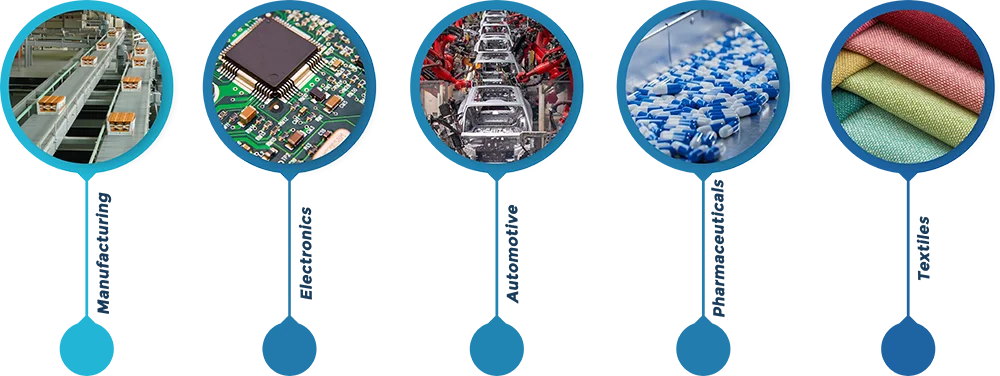Defect detection using AI driven machine vision system
Published Jun 14, 2024
In the realm of manufacturing, quality inspection stands as a critical pillar, ensuring that products meet the highest standards before reaching customers. Among the various quality assurance methods, visual inspection plays a pivotal role in detecting defects and maintaining product integrity. However, manual visual inspection is impractical and often impossible in large-scale manufacturing facilities due to the sheer volume of products and the precision required. Consequently, manufacturers have historically invested heavily in machine vision systems to automate and enhance this process.
Traditional machine vision systems, while effective, come with significant drawbacks. They are notoriously expensive, complex to set up, and lack scalability—requiring a separate system for each production line. This is where AI-driven machine vision systems come into play, offering a revolutionary approach that overcomes these limitations and transforms the landscape of quality inspection.
What is Machine Vision?

Machine vision involves the use of cameras and image processing algorithms to interpret and analyze video streams. This technology mimics the human visual system but is enhanced by the speed, precision, and consistency of computers. Machine vision systems can inspect products for defects by comparing them against predefined standards or reference models.
The Evolution from Traditional to AI-Driven Machine Vision
Traditional machine vision systems depend on predefined rules and parameters to identify defects. These systems require meticulous programming and are often inflexible, making them challenging to adapt to new products or changing inspection criteria. Moreover, the high cost and complexity of these systems have made them inaccessible for many manufacturers, especially those with multiple production lines.
AI-driven machine vision systems, on the other hand, introduce a game-changing solution. By leveraging advanced AI algorithms and connected camera networks, these systems can dynamically analyze visual data from production lines. The AI software, typically running on a central server, processes video streams from cameras installed on the production or inspection lines. This setup allows for real-time detection of defects, even those that are minuscule and difficult to spot with the naked eye.
How AI-Driven Machine Vision Works

- High-Resolution Cameras: Cameras capture detailed video streams of products as they move along the production line. These cameras can range from standard industrial cameras to specialized high-resolution or microscopic cameras for detailed inspections.
- AI Software Integration: The captured video streams are sent to AI-powered software on a server. This software is designed to process and analyze the images using sophisticated deep learning models trained to identify a wide range of defects.
- Real-Time Analysis: The AI software analyzes the video in real-time, identifying defects such as cracks, scratches, misalignments, or any other anomalies. The system's ability to process images rapidly and accurately ensures immediate detection and action, minimizing the chances of defective products reaching customers.
- Scalability and Flexibility: Unlike traditional systems, AI-driven machine vision systems are highly scalable. One centralized AI system can handle multiple production lines simultaneously, reducing the need for individual systems for each line. This not only cuts costs but also simplifies the implementation and expansion of the inspection processes.
The Role of AI in Machine Vision

Artificial Intelligence (AI) amplifies the capabilities of traditional machine vision systems by introducing elements like deep learning, neural networks, and advanced image processing techniques. AI-driven systems can learn from vast amounts of data, improve over time, and adapt to new types of defects without extensive reprogramming.
- Deep Learning: Deep learning models, particularly Convolutional Neural Networks (CNNs), have shown remarkable success in image classification and anomaly detection. They can be trained on large datasets to identify subtle and complex defects that traditional systems might miss.
- Generative AI: This involves using AI algorithms to generate high-resolution images from lower resolution ones, effectively enhancing the image quality. This is particularly useful in microscopic defect detection, where every pixel matters.
- Image Processing Algorithms: Advanced image processing algorithms can enhance image quality, highlight potential defects, and filter out noise. Techniques like edge detection, thresholding, and morphological operations are commonly used to preprocess images for AI analysis.
Key Components of an AI-Driven Machine Vision System

- Cameras and Sensors: High-resolution cameras and sensors are the eyes of the system, capturing detailed images of the products being inspected.
- Image Processing Hardware: This includes powerful processors and GPUs that handle the complex computations required for image analysis and AI processing.
- Software and Algorithms: The software is the brain of the system, equipped with sophisticated algorithms for image enhancement, defect detection, and decision-making.
- Integration and Automation: These systems are often integrated with production lines and automation systems, allowing for real-time inspection and immediate action when defects are detected.
Benefits of AI-Driven Machine Vision Systems

- Enhanced Accuracy: AI models can detect even the smallest defects that traditional systems might miss, ensuring higher product quality.
- Increased Speed: The ability to process and analyze video streams in real-time allows for rapid inspection, keeping up with high-speed production lines without compromising on qualit
- Cost-Effectiveness: While the initial investment in AI-driven systems may be significant, the long-term savings from reduced manual labor, fewer defects, and lower operational costs make them a cost-effective solution.
- Flexibility and Adaptability: AI-driven systems can easily be re-trained or updated to accommodate new products or changes in inspection criteria, making them versatile across different manufacturing scenarios.
- Centralized and Scalable: A single AI-driven system can manage multiple inspection points or production lines, offering unparalleled scalability and simplifying the infrastructure needed for quality inspection.
Applications in Industry
AI-driven machine vision systems are employed across various sectors, each with unique requirements and challenges:

- Manufacturing: Ensuring the quality of goods from automotive parts to consumer electronics to metal to plastic, AI systems catch defects for all kinds of products that traditional methods might overlook. In manufacturing, these systems are used to inspect products on production lines for defects such as cracks, scratches, or incorrect assembly. This ensures only quality products reach the end customers.
- Electronics: For electronics, where components are small and complex, AI vision systems can detect minute defects in circuit boards, solder joints, and components that are often invisible to the naked eye.
- Automotive: In the automotive industry, AI vision systems inspect parts like engine components, body panels, and tires for defects that could affect safety and performance.
- Pharmaceuticals: Here, machine vision ensures the integrity and quality of products by inspecting packaging, labeling, and even the products themselves for defects and compliance with regulations.
- Textiles: In the textile industry, AI-driven vision systems inspect fabrics for defects such as weaving errors, stains, and color inconsistencies.
Challenges and Considerations
Data Requirements: Training AI models requires vast amounts of high-quality data representing all possible defect scenarios. Collecting and curating this data can be challenging but is essential for effective model performance.
AI-driven machine vision systems represent a transformative leap in defect detection technology. By combining the precision of machine vision with the adaptability of AI, these systems provide a powerful tool for ensuring product quality and operational efficiency across industries. As technology continues to evolve, these systems will become even more integral to the future of manufacturing and quality assurance.

